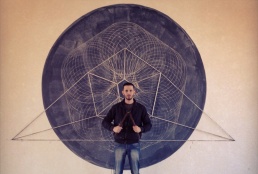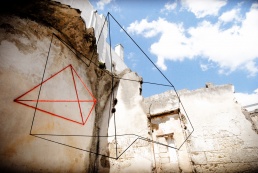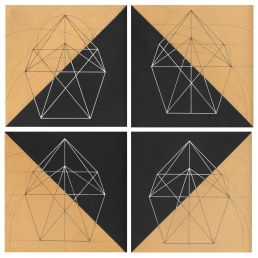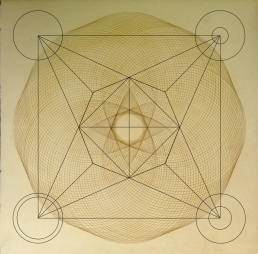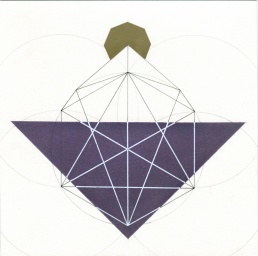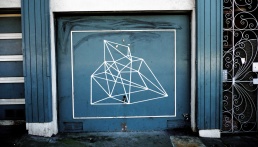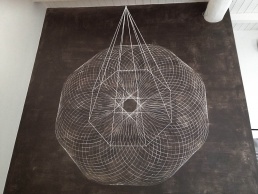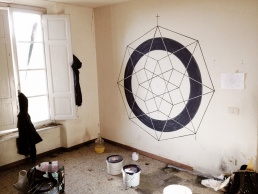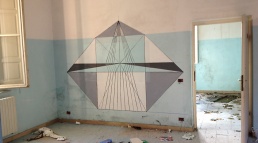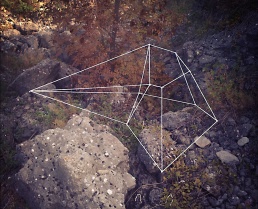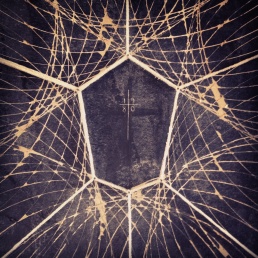This is Moneyless
“Simplicity is the ultimate sophistication”, this was a quote from the Renaissance man, Leonardo da Vinci. Now, centuries later, it still holds true. Although in the chaotic realm of street art, simplicity also means visual power… power that the artist known as Moneyless has tapped into.
I have a lot of respect for artists who has chosen to undergo drastic changes in their pursuit to refine their art. This, in my opinion, shows guts, humility, control and a sense of responsibility towards the elusive title “artist”. Being able to take a peak at Moneyless’ evolution is truly an experience I deeply appreciate. Read on… learn… be inspired.
Interview by Crist Espiritu.
Artworks by Moneyless.
Tell me the story behind your street name Moneyless and a bit about your early graffiti days. When and how did you start hitting the streets? Who were your influences when you started out?
My name comes out from the concept-statement of making art without any budget, starting from raw, salvaged and poor materials, if you wish, it’s a kind of rejection of the consumerist world.
I started hitting the streets at 13 years old at the beginning of high school. I was living in Milan at that time and my influences were definitely the crews from there. Afterwards, when I was 15 years old, me and my family moved to the Tuscan countryside and my scenery changed completely. The hysterical frantic city opposed to the slow life stream. I must admit that I’ve been influenced more by the Masters of Constructivism, Arte Povera and Minimalism more than by writers… my attempt is to pick that message back and give it another interpretation, in a modern way.
How did you end up working with just lines? Was it a long process of deconstruction from your graffiti past? Did you go through gradual stages of subtracting elements in your art or was it an abrupt decision to just start doing geometrical patterns and solid colors?
I clearly see that the seeds of what I’m producing now were from the first period I was experimenting with graffiti.
I reckon it was around 2004 when I began to write “Moneyless” in a more geometrical way everyday, and while the lettering component was still very clear, I started feeling I needed to move away from that. The “letter” began to represent a constriction and a limit for me, and the writing system was a bit uncomfortable too. I found that world of rules and habits very old-fashioned, and the fights between gangs were not very interesting either.
I need to emphasize the fact that the change of perspective I witnessed in that period was truly connected to many other artists that felt the same as me, the desire of still being able to use our media, the wall, but in a new and different way. Writing was though a thing from the past: a wonderful thing, that now was over.
Our bond with the letters was slowly fading away. I wanted to undress the letters from that alphabetical presence, I was concerned only about the shapes. My efforts dropped the symbolic meaning of the letter, and the geometrical forms became the field of my ongoing process of investigation.
“Painting to me is a joy. And being able to do it with my long-time friends is something magical. Street will always have a certain charm on me, even if my streets now are in the woods!”
I really think your style is so effective in the streets. It really stands out from the usual graffiti or street art pieces. Is that part of your intention… part of the reason why you decided to just do geometric patterns?
Pretty much. My intention was to create something new on the streets and give another form to a language that was submitted to itself at the end of the nineties-early 2000’s. Nowadays, I consider myself as an anti-bomber, in the sense that all of my work pre-supposes intimacy, and this intimacy is part of the process in which the audience must discover what’s my production about and where it’s hidden. Remote spots and woods became my settings and usual landscapes.
I’m very interested in your creative process. How do you choose the walls you want to hit? And how do you come up with the piece to put on it? Would you say that your art adapts to the wall or the wall is forced to adapt to your art?
I do believe in the dictum “hic et nunc” in the inspiration of the moment. I generally walk a lot to find a good place, but everything’s blessed by the emotion I got in the very right second I’m there.
Funny question. How long does it usually take you to finish a piece done without illegally? I’m just thinking it must be kind hard to do straight lines in a hurry. Judging from the photos I saw on your site, your pieces are really precise.
Since I started doing something different that painting a wall, I never had problems. The yarn reflects my decisions on making art with low budgets, plus this is a totally reversal process, let’s say, “not against the law” cause it can be removed if needed.
Anyways, a medium size piece takes me a couple of hours to be done.
Being a famous artist now who exhibits all around the world, do you still find time to do random street pieces?
Anytime! Painting to me is a joy. And being able to do it with my long-time friends is something magical. Street will always have a certain charm on me, even if my streets now are in the woods!
“I consider myself as an anti-bomber, in the sense that all of my work pre-supposes intimacy, and this intimacy is part of the process in which the audience must discover what’s my production about and where it’s hidden.”
Judging from your artistic development, you are in a path of breaking down things into their rawest form. Do you ever stop to think where it would stop? Do you see your self once again maybe adding elements to your art in the future? Or maybe even painting figuratively again?
I beleive my path is going towards a continuing subtraction, my efforts now go for simplicity and neatness, at the same time entrenched with a structural complexity.
My shapes are reduced to the minimum, at the same time they carry some kind of an intense tension, an invisible movement; most of my patterns hide multiple visions and different perspectives. I think my art now speaks through geometry, and future developments I guess it will have to do with techniques. The figurative element is, and probably will always be, far from my investigation. The only time I can deal with figures is when I make collaborations with other artists.
Are the geometrical patterns created by your lines representative of things found in nature (or the urban landscape)? Or are they more abstract expressionistic… like based on emotions? Do you plan your pieces carefully, like on a mathematical (scientific) level or do you have a sort of automatist approach?
Far from being just string conjunctions, my works are not abstract representations, just because they come out from existing elements which then I turn in transcendent elements.
Their non-existence seems to describe these elements like living in the Platonic “World of Ideas”, they represent ideas of reality.
